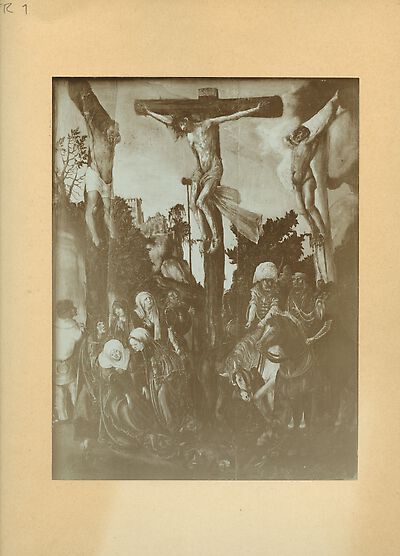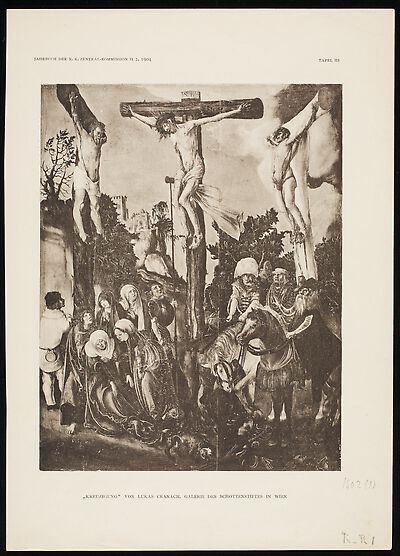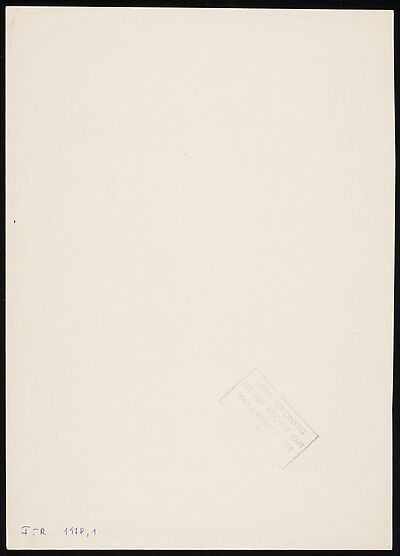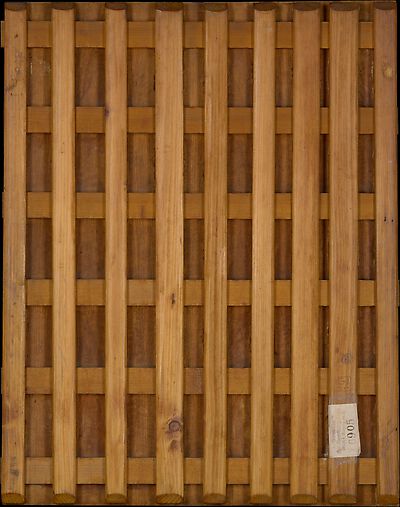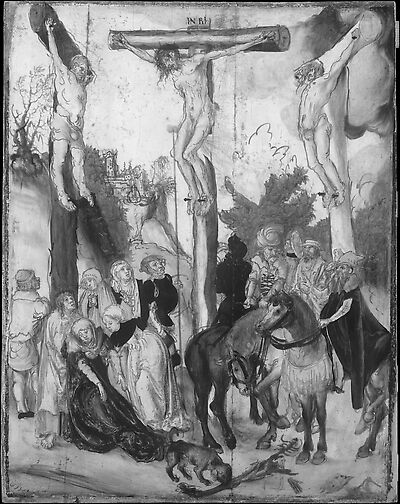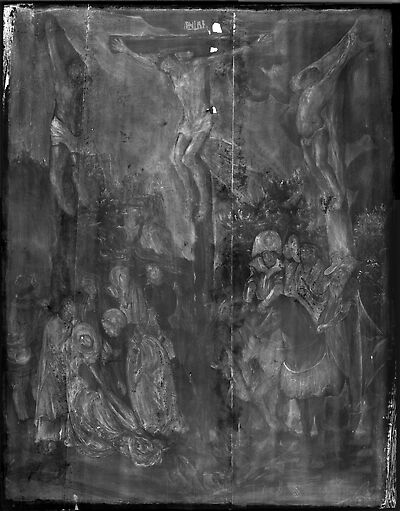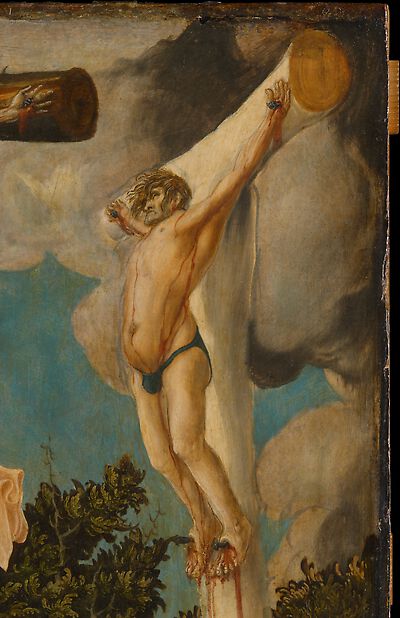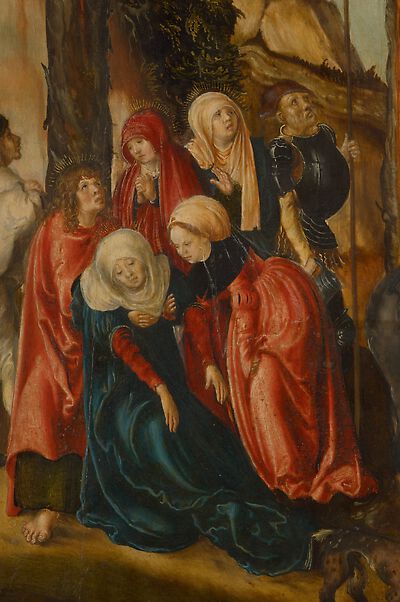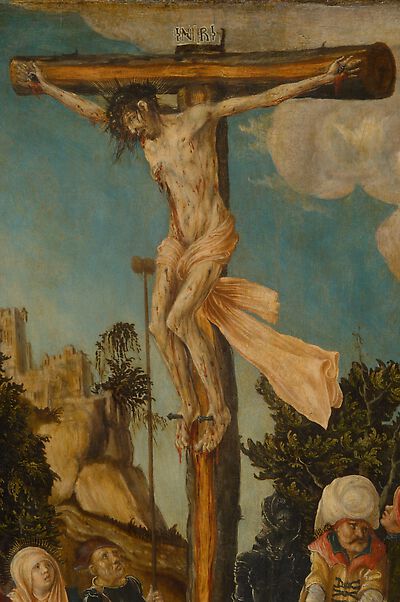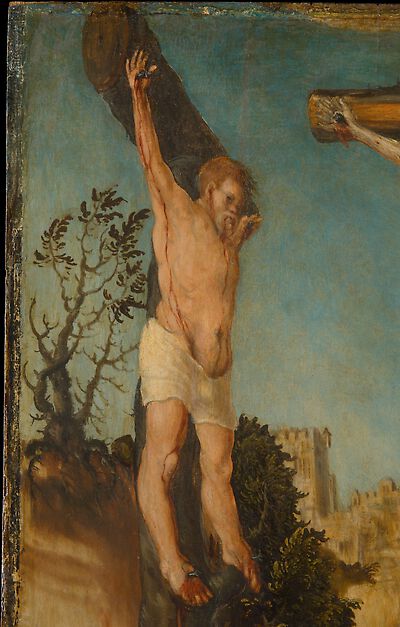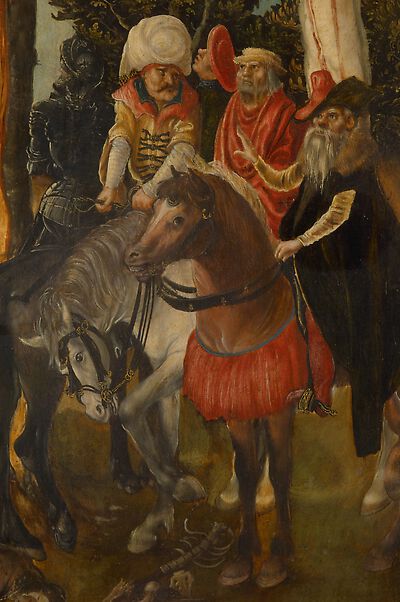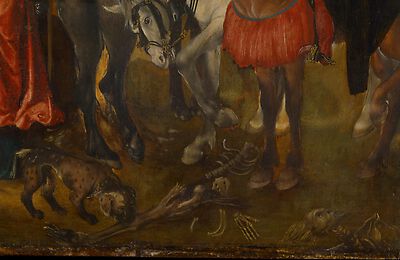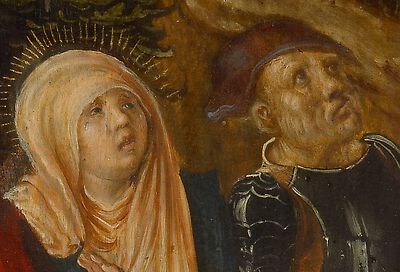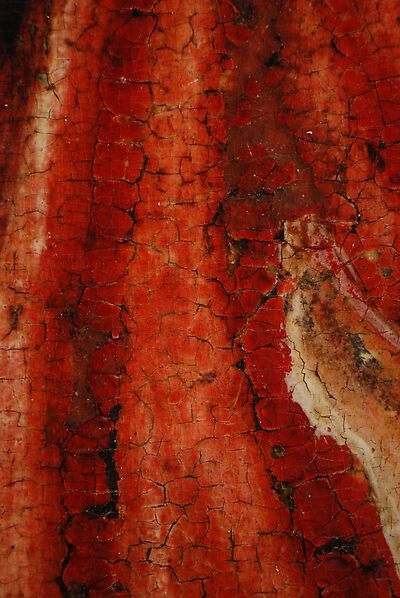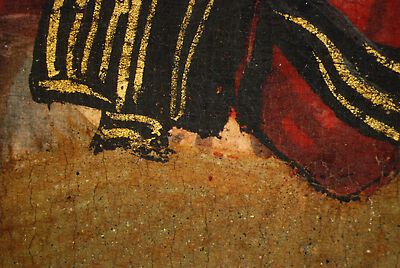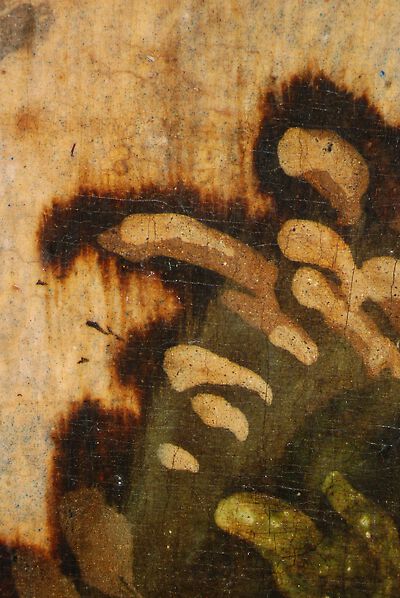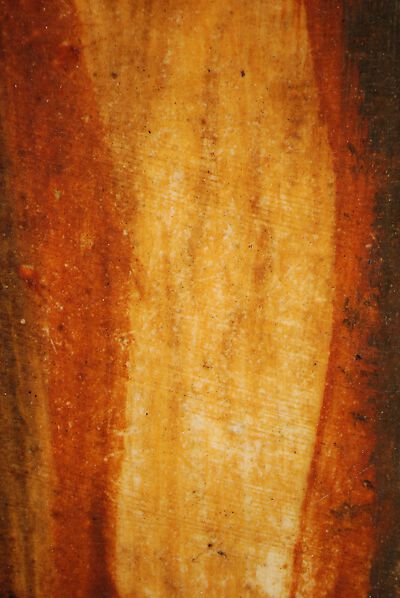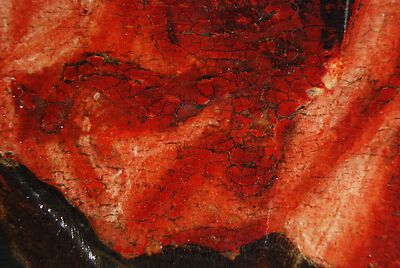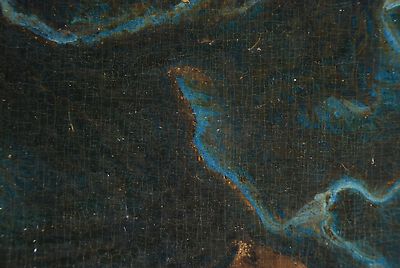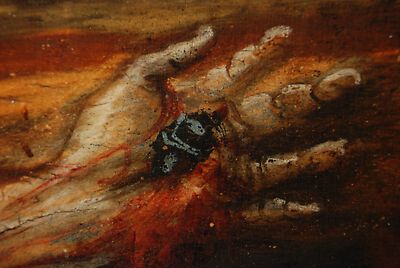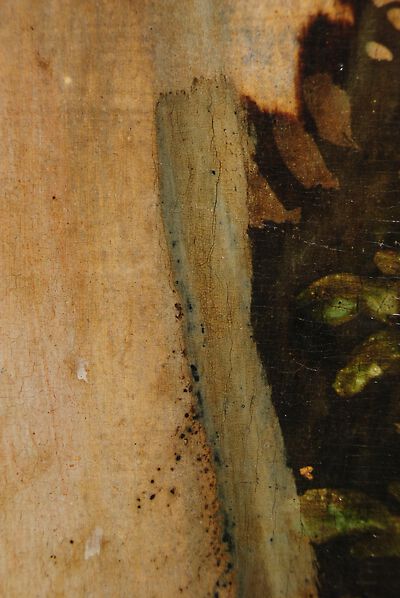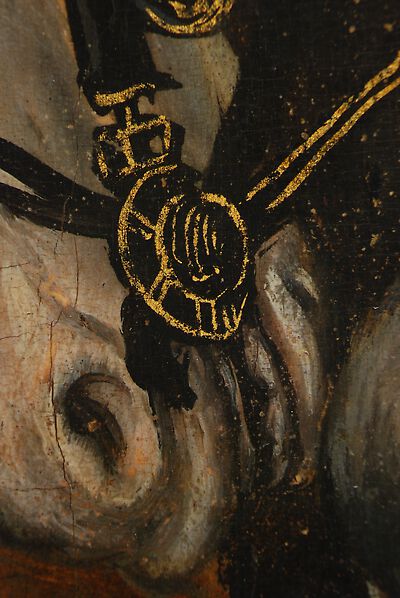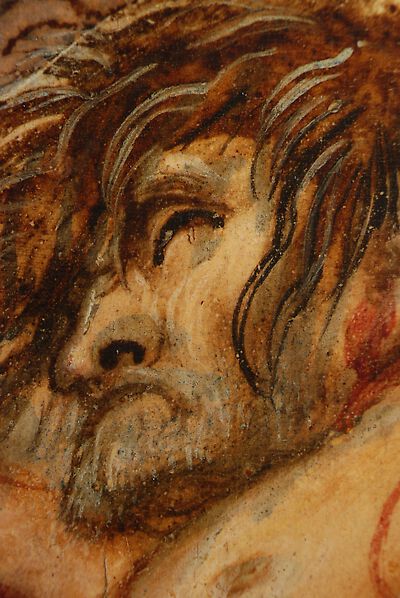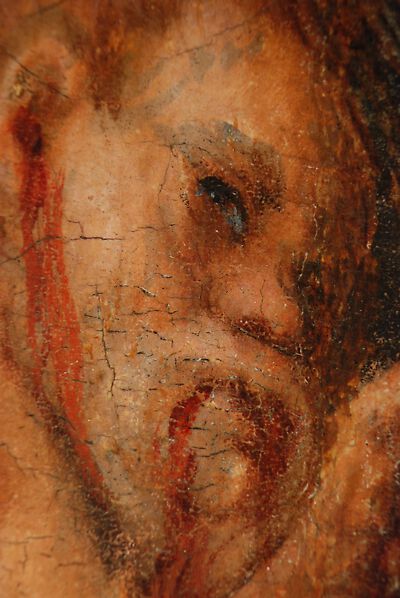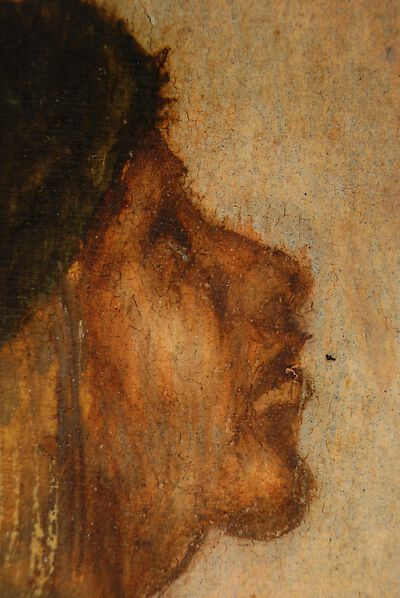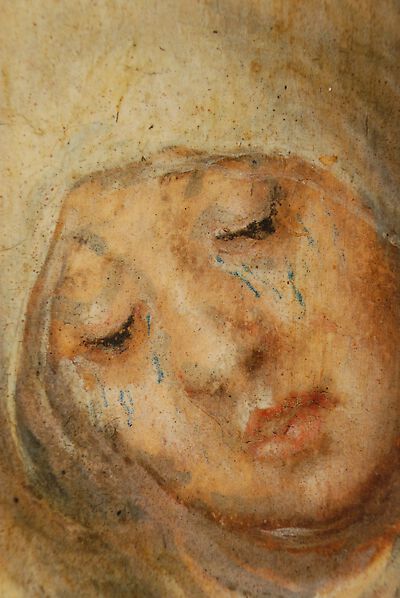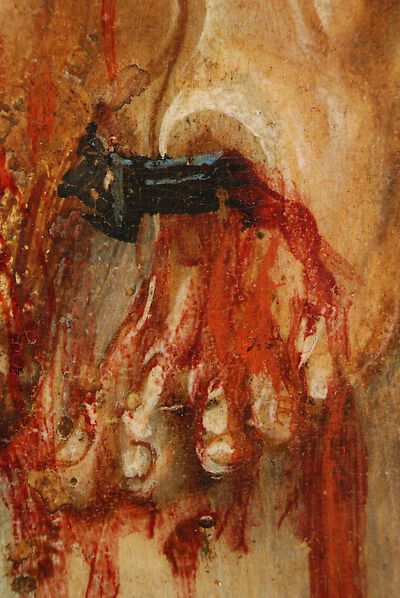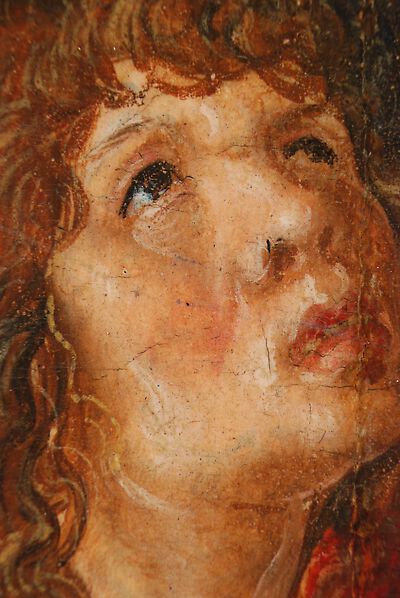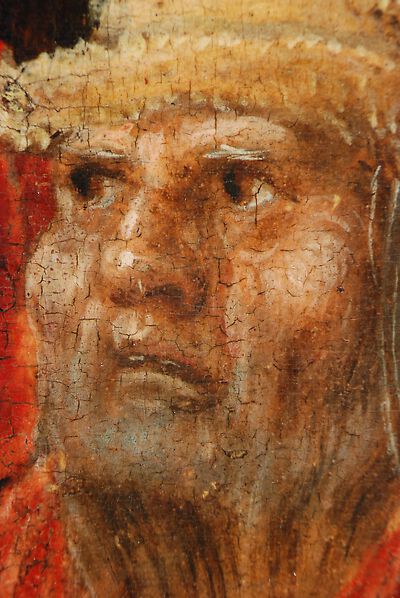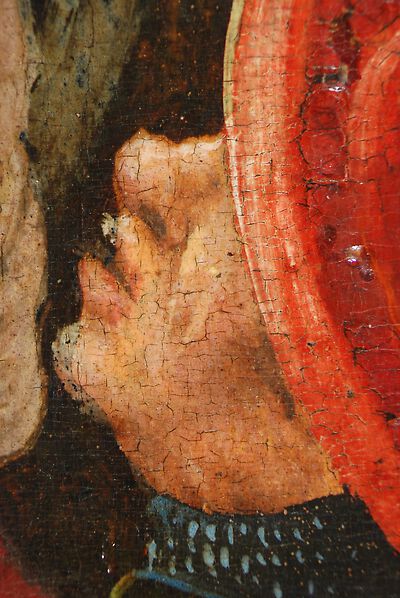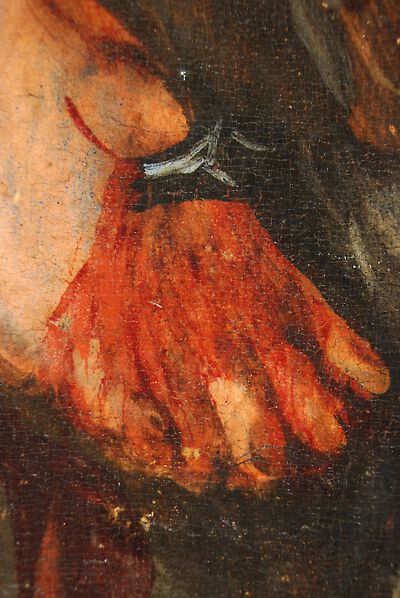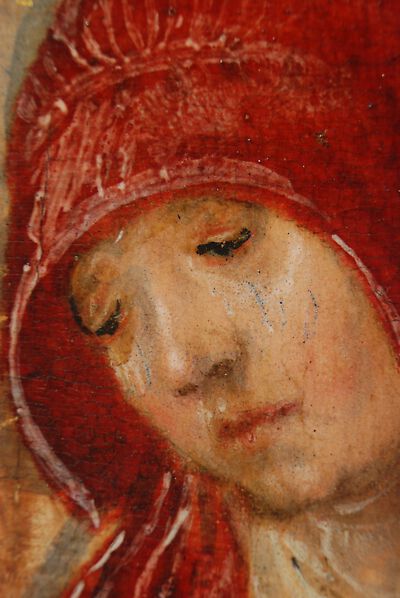| Exhib. Cat. Vienna 2022 |
75, 76, 140 |
001 |
Fig. p. 75 |
| Editor | Guido Messling, Kerstin Richter |
|---|
| Title | Cranach. Die Anfänge in Wien [Winterthur, Sammlung Oskar Reinhart, 12.03-12.06.2022; Vienna, Kunsthistorisches Museum, 21.06-16.10.2022] |
|---|
| Place of Publication | Munich |
|---|
| Year of Publication | 2022 |
|---|
|
| Bonnet, Görres 2015 |
14-15 |
2 |
p. 15 |
| Author | Anne-Marie Bonnet, Daniel Görres |
|---|
| Title | Lucas Cranach d. Ä. - Maler der Deutschen Renaissance |
|---|
| Place of Publication | Munich |
|---|
| Year of Publication | 2015 |
|---|
|
| Exhib. Cat. Frankfurt 2014 |
92-93 |
33 |
p. 93 |
| Editor | Stefan Roller, Jochen Sander |
|---|
| Title | Fantastische Welten. Albrecht Altdorfer und das Expressive in der Kunst um 1500, [Frankfurt, Städel Museum, 5 Nov 2014 - 8 Feb 2015; Vienna, Kunsthistorisches Museum, 17 Mar 2015 - 14 Jun 2015] |
|---|
| Place of Publication | Munich |
|---|
| Year of Publication | 2014 |
|---|
|
| Bonnet, Kopp-Schmidt, Görres 2010 |
130 |
No. 2 |
Plate |
| Author | Anne-Marie Bonnet, Gabriele Kopp-Schmidt, Daniel Görres |
|---|
| Title | Die Malerei der deutschen Renaissance |
|---|
| Place of Publication | Munich |
|---|
| Year of Publication | 2010 |
|---|
|
| Exhib. Cat. Brussels 2010 |
103-104 |
5 |
|
| Editor | Bozarbooks & Lannoo, Guido Messling |
|---|
| Title | Die Welt des Lucas Cranach. Ein Künstler im Zeitalter von Dürer, Tizian und Metsys [anlässlich der Ausstellung "Die Welt des Lucas Cranach", Palast der Schönen Künste, Brüssel, 20. Oktober 2010 - 23. Januar 2011] |
|---|
| Place of Publication | Brussels |
|---|
| Year of Publication | 2010 |
|---|
|
| Kunz 2010 |
82 |
|
|
| Author | Armin Kunz |
|---|
| Title | Anmerkungen zu Cranach als Graphiker |
|---|
| Publication | in Guido Messling, ed., Die Welt des Lucas Cranach. Ein Künstler im Zeitalter von Dürer, Tizian und Metsys, Exhib. Cat. Brussels |
|---|
| Place of Publication | Brussels |
|---|
| Year of Publication | 2010 |
|---|
| Pages | 80-93 |
|---|
|
| Exhib. Cat. Frankfurt 2007 |
116-117 |
2 |
p. 117 |
| Editor | Bodo Brinkmann |
|---|
| Title | Cranach der Ältere, [Frankfurt, Städel Museum, 23 Nov 2007 - 17 Feb 2008] |
|---|
| Place of Publication | Ostfildern |
|---|
| Year of Publication | 2007 |
|---|
|
| Heydenreich 2007 A |
47 |
|
Figs. 16, 17 |
|
|
| Heydenreich 2007 B |
35 |
|
|
| Author | Gunnar Heydenreich |
|---|
| Title | "... dass Du mit wunderbarer Schnelligkeit malest". Virtuosität und Effizienz in der künstlerischen Praxis Lucas Cranachs d. Ä. |
|---|
| Publication | in Bodo Brinkmann, ed., Cranach der Ältere, Exhib. Cat. FrankfurtA |
|---|
| Place of Publication | Ostfildern |
|---|
| Year of Publication | 2007 |
|---|
| Pages | 29-47 |
|---|
|
| Seipel et al. 2007 |
182 |
|
with Fig. |
| Editor | Wilfried Seipel, Cäcilia Bischoff |
|---|
| Title | Das Kunsthistorische Museum in Wien |
|---|
| Series | Prestel-Museumsführer |
|---|
| Place of Publication | Vienna |
|---|
| Year of Publication | 2007 |
|---|
|
| Stadlober 2006 |
155-164 |
|
Fig. 25 |
| Author | Margit Stadlober |
|---|
| Title | Der Wald in der Malerei und der Graphik des Donaustils |
|---|
| Series | Ars viva |
|---|
| Volume | 10 |
|---|
| Place of Publication | Vienna, Böhlau |
|---|
| Year of Publication | 2006 |
|---|
|
| Lechner 2005 |
29 |
|
Fig. 23 |
| Author | Georg Matthias Lechner |
|---|
| Title | Lucas Cranach d. Ä.. Das "Paradies" im Wiener Kunsthistorischen Museum. Landschaftsdarstellung, Bilderzählung, Hintergründe. Zum Schaffen des Künstlers um 1530 [Diplomarbeit, Universität Wien] |
|---|
| Place of Publication | [Vienna] |
|---|
| Year of Publication | 2005 |
|---|
|
| Schölzel 2005 |
197 Fn. 5 |
|
|
| Author | Christoph Schölzel |
|---|
| Title | Zeichnungen unter der Farbschicht. Zu den Unterzeichnungen von Cranachs Gemälden in der Gemäldegalerie Alte Meister und in der Rüstkammer Dresden |
|---|
| Publication | in Harald Marx, Ingrid Mössinger, Karin Kolb, eds., Cranach. Gemälde aus Dresden, Exhib. Cat. Chemnitz |
|---|
| Place of Publication | Cologne |
|---|
| Year of Publication | 2005 |
|---|
| Pages | 182-197 |
|---|
|
| Wegmann 2003 |
|
|
|
| Author | Susanne Wegmann |
|---|
| Title | Rezension von: Bierende 2002 und Heiser 2002 |
|---|
| Journal | Sehepunkte. Rezensionsjournal für die Geschichtswissenschaften |
|---|
| Issue | Jg. 3, H. Nr. 11 |
|---|
| Year of Publication | 2003 |
|---|
|
| Bierende 2002 |
16-24, 38-84, 84-108 |
|
Figs. 1, 13, 34 |
| Author | Edgar Bierende |
|---|
| Title | Lucas Cranach d.Ä. und der deutsche Humanismus. Tafelmalerei im Kontext von Rhetorik, Chroniken und Fürstenspiegeln |
|---|
| Place of Publication | Berlin |
|---|
| Year of Publication | 2002 |
|---|
|
| Heiser 2002 |
25-27, 34, 39, 42, 54, Fns. 214, 257; 88-89, Fn. 559; 93, 108, 111, 134 |
|
Figs. 9, 79, 110, 111 |
| Author | Sabine Heiser |
|---|
| Title | Das Frühwerk Lucas Cranachs des Älteren. Wien um 1500 - Dresden um 1900 |
|---|
| Series | Neue Forschungen zur Deutschen Kunst |
|---|
| Volume | 6 |
|---|
| Place of Publication | Berlin |
|---|
| Year of Publication | 2002 |
|---|
|
| Exhib. Cat. Wiener Neustadt 2000 |
|
No. 101 |
|
| Author | Christa Angermann |
|---|
| Editor | Kulturamt der Stadt Wiener Neustadt |
|---|
| Editing | Norbert Koppensteiner, Ingrid Riegler |
|---|
| Title | Maximilian I. Der Aufstieg eines Kaisers von seiner Geburt bis zur Alleinherrschaft 1459 - 1493 |
|---|
| Place of Publication | Wiener Neustadt |
|---|
| Year of Publication | 2000 |
|---|
|
| Anzelewsky 1999 |
125, 128, 132-133 |
|
Fig. 4 |
| Author | Fedja Anzelewsky |
|---|
| Title | Studien zur Frühzeit Lukas Cranachs d.Ä. |
|---|
| Journal | Städel-Jahrbuch |
|---|
| Issue | 17 |
|---|
| Year of Publication | 1999 |
|---|
| Pages | 125-144 |
|---|
|
| Exhib. Cat. Eisenach 1998 |
96, 97, 103 |
No. 11.1 |
Figs. 11.1a-e |
| Editor | Wartburg-Stiftung, Eisenach, Fachhochschule , Ingo Sandner |
|---|
| Title | Unsichtbare Meisterzeichnungen auf dem Malgrund. Cranach und seine Zeitgenossen. Ausstellungskatalog und Tagungsband Katalogteil 1; 2: Werkstatt und Schüler Cranachs; 3: Süddeutsche Meister; 4: Albrecht Dürer und sein Kreis; 5: Rheinische Meister |
|---|
| Place of Publication | Regensburg |
|---|
| Year of Publication | 1998 |
|---|
| Pages | 229-240 |
|---|
|
| Heydenreich 1998 A |
185, 196 |
|
|
| Author | Gunnar Heydenreich |
|---|
| Title | Herstellung, Grundierung und Rahmung der Holzbildträger in den Werkstätten Lucas Cranachs d.Ä. |
|---|
| Publication | in Ingo Sandner, Wartburg-Stiftung Eisenach and Fachhochschule Köln, eds., Unsichtbare Meisterzeichnungen auf dem Malgrund. Cranach und seine Zeitgenossen, Exhib. Cat. Eisenach |
|---|
| Place of Publication | Regensburg |
|---|
| Year of Publication | 1998 |
|---|
| Pages | 181-200 |
|---|
|
| Sandner 1998 B |
84-85, 88, 90 |
|
|
| Author | Ingo Sandner |
|---|
| Title | Cranach als Zeichner auf dem Malgrund |
|---|
| Publication | in Ingo Sandner, Wartburg-Stiftung Eisenach and Fachhochschule Köln, eds., Unsichtbare Meisterzeichnungen auf dem Malgrund. Cranach und seine Zeitgenossen, Exhib. Cat. Eisenach |
|---|
| Place of Publication | Regensburg |
|---|
| Year of Publication | 1998 |
|---|
| Pages | 83-95 |
|---|
|
| Schawe 1998 |
165 |
|
|
| Author | Martin Schawe |
|---|
| Title | Das Tafelgemälde "Kreuzigung Christi" Lucas Cranachs des Älteren von 1503 |
|---|
| Publication | in Ingo Sandner, Wartburg-Stiftung Eisenach and Fachhochschule Köln, eds., Unsichtbare Meisterzeichnungen auf dem Malgrund. Cranach und seine Zeitgenossen, Exhib. Cat. Eisenach |
|---|
| Place of Publication | Regensburg |
|---|
| Year of Publication | 1998 |
|---|
| Pages | 160-166 |
|---|
|
| Stadlober 1998 |
420, 421 |
|
Fig. p. 467 |
| Author | Margit Stadlober |
|---|
| Title | Das Frühwerk Lucas Cranachs d. Ä. und Österreich - Ein Entwicklungsweg |
|---|
| Journal | Österreichische Zeitschrift für Kunst und Denkmalpflege |
|---|
| Issue | 52/2 |
|---|
| Year of Publication | 1998 |
|---|
| Pages | 414-423 |
|---|
|
| Deroo 1996 |
20-21 |
|
with Fig. |
| Author | Marc Deroo |
|---|
| Title | Lucas Cranach d. Ä. |
|---|
| Place of Publication | Paris |
|---|
| Year of Publication | 1996 |
|---|
|
| Büttner 1994 |
24 |
|
Fig. 1 |
|
|
| Exhib. Cat. Kronach 1994 |
294, 295, 328, 371 |
110 |
Fig. p. 295, Fig. p. 18 |
| Editor | Claus Grimm, Johannes Erichsen, Evamaria Brockhoff |
|---|
| Title | Lucas Cranach. Ein Maler-Unternehmer aus Franken [Festung Rosenberg, Kronach 17.05 - 21.08.1994; Museum der Bildenden Künste, Leipzig 07.09 - 06.11.1994] |
|---|
| Series | Veröffentlichungen zur bayerischen Geschichte und Kultur |
|---|
| Volume | 26 |
|---|
| Place of Publication | Augsburg, Coburg |
|---|
| Year of Publication | 1994 |
|---|
|
| Grimm 1994 |
18, 19 |
110 |
Fig. A1 |
| Author | Claus Grimm |
|---|
| Title | Lucas Cranach 1994 |
|---|
| Publication | in Claus Grimm, Johannes Erichsen, Evamaria Brockhoff, eds., Lucas Cranach. Ein Maler-Unternehmer aus Franken, Exhib. Cat. Kronach 1994 |
|---|
| Series | Veröffentlichungen zur bayerischen Geschichte und Kultur |
|---|
| Volume | 26 |
|---|
| Place of Publication | Augsburg, Regensburg |
|---|
| Year of Publication | 1994 |
|---|
| Pages | 18-43 |
|---|
|
| Hörsch 1994 |
96 |
|
|
| Author | Markus Hörsch |
|---|
| Title | Auftraggeber und Maler im Bistum Bamberg |
|---|
| Publication | in Claus Grimm, Johannes Erichsen, Evamaria Brockhoff, eds., Lucas Cranach. Ein Maler-Unternehmer aus Franken, Exhib. Cat. Kronach 1994 |
|---|
| Series | Veröffentlichungen zur bayerischen Geschichte und Kultur |
|---|
| Volume | 26 |
|---|
| Place of Publication | Augsburg, Coburg |
|---|
| Year of Publication | 1994 |
|---|
| Pages | 96-110 |
|---|
|
| Klein 1994 A |
195 |
|
Tab. 1 |
| Author | Peter Klein |
|---|
| Title | Lucas Cranach und seine Werkstatt. Holzarten und dendrochronologische Analyse |
|---|
| Publication | in Claus Grimm, Johannes Erichsen, Evamaria Brockhoff, eds.,Lucas Cranach. Ein Maler-Unternehmer aus Franken, Exhib. Cat. Kronach 1994 |
|---|
| Series | Veröffentlichungen zur bayerischen Geschichte und Kultur |
|---|
| Volume | 26 |
|---|
| Place of Publication | Augsburg, Coburg |
|---|
| Year of Publication | 1994 |
|---|
| Pages | 194-200 |
|---|
|
| Reiter 1994 |
42, Fn. 20 |
|
|
| Author | Cornelia Reiter |
|---|
| Title | Die Geschichte der Gemäldesammlung des Schottenstiftes |
|---|
| Publication | in Alfred Brogyányi, ed., Festschrift zur Eröffnung des Museums im Schottenstift |
|---|
| Place of Publication | Vienna |
|---|
| Year of Publication | 1994 |
|---|
| Pages | 39-44 |
|---|
|
| Sandner, Ritschel 1994 |
186-189 |
|
Fig. A123 |
| Author | Ingo Sandner, Iris Ritschel |
|---|
| Title | Arbeitsweise und Maltechnik Lucas Cranachs und seiner Werkstatt |
|---|
| Publication | in Claus Grimm, Johannes Erichsen, Evamaria Brockhoff, eds., Lucas Cranach. Ein Maler-Unternehmer aus Franken, Exhib. Cat. Kronach 1994 |
|---|
| Series | Veröffentlichungen zur bayerischen Geschichte und Kultur |
|---|
| Volume | 26 |
|---|
| Place of Publication | Augsburg, Coburg |
|---|
| Year of Publication | 1994 |
|---|
| Pages | 186-193 |
|---|
|
| Schütz 1991 |
92 |
|
|
| Author | Karl Schütz |
|---|
| Title | Der Sebastiansaltar Altdorfers und seine Vorzeichnungen - stilkritische und technische Aspekte |
|---|
| Journal | Kunsthistoriker, Mitteilungen des Österreichischen Kunsthistorikerverbandes |
|---|
| Issue | 8, Sondernummer: 6 |
|---|
| Year of Publication | 1991 |
|---|
| Pages | 91-95 |
|---|
|
| Locicnik 1990 |
26, 134, Fn. 16, 138-140, 176, 177-182, 183, 187-188, 193, 200, 203, 205 |
|
Figs. 79, 82 |
| Author | Raimund Andreas Locicnik |
|---|
| Title | Die Donauschule. Analyse ihrer Erforschung und Versuch einer neuen Grundlegung [Dissertation] |
|---|
| Place of Publication | Salzburg |
|---|
| Year of Publication | 1990 |
|---|
|
| Exhib. Cat. Berlin 1988 |
328 |
|
|
| Editor | Hans Mielke, Staatliche Museen zu Berlin - Preußischer Kulturbesitz, Kupferstichkabinett |
|---|
| Title | Albrecht Altdorfer. Zeichnungen, Deckfarbenmalerei, Druckgraphik |
|---|
| Place of Publication | Berlin |
|---|
| Year of Publication | 1988 |
|---|
|
| Schindler 1987 |
21 |
|
|
| Author | Herbert Schindler |
|---|
| Title | Sodalitas Danubia. Betrachtungen über die Donauschule und den Donaustil |
|---|
| Journal | Oberösterreiche Kulturzeitschrift |
|---|
| Issue | H. 2 |
|---|
| Year of Publication | 1987 |
|---|
| Pages | 19-29 |
|---|
|
| Exhib. Cat. Paris 1984 |
27 |
|
|
| Editor | Centre Culturel du Marais, Paris, Fedja Anzelewsky |
|---|
| Title | Altdorfer und der fantastische Realismus in der deutschen Kunst |
|---|
| Place of Publication | Paris |
|---|
| Year of Publication | 1984 |
|---|
|
| Stadlober 1982 |
151, 152 (Bd. 1) |
|
Plate XXXV (Bd. 2) |
| Author | Margit Stadlober |
|---|
| Title | Der Hochaltar der Heiligblutkirche zu Pulkau [Dissertation] |
|---|
| Volume | 1, 2 |
|---|
| Place of Publication | Graz |
|---|
| Year of Publication | 1982 |
|---|
|
| Schindler 1981 |
69 |
|
|
| Author | Herbert Schindler |
|---|
| Title | Albrecht Altdorfer und die Anfänge des Donaustils |
|---|
| Volume | 23 |
|---|
| Journal | Ostbairische Grenzmarken, Passauer Jahrbuch für Geschichte, Kunst und Volkskunde |
|---|
| Year of Publication | 1981 |
|---|
| Pages | 66-73 |
|---|
|
| Friedländer, Rosenberg 1979 |
13, 15, 66 |
No. 1 |
Fig. 1 |
| Author | Max J. Friedländer, Jakob Rosenberg |
|---|
| Editor | G. Schwartz |
|---|
| Title | Die Gemälde von Lucas Cranach |
|---|
| Place of Publication | Basel, Boston, Stuttgart |
|---|
| Year of Publication | 1979 |
|---|
|
| Klauner 1978 |
78-80 |
|
Fig. 37 |
| Author | Friederike Klauner |
|---|
| Title | Die Gemäldegalerie des Kunsthistorischen Museums. Vier Jahrhunderte europäische Malerei |
|---|
| Place of Publication | Vienna |
|---|
| Year of Publication | 1978 |
|---|
|
| Exhib. Cat. Basel 1974/1976 |
120, 124, 170, 443, 488 |
|
|
|
|
| Schade 1974 |
15, 16 |
|
Plate 1 |
|
|
| Cat. Vienna 1973 |
48 |
|
Plate 130 |
| Editor | Klaus Demus |
|---|
| Title | Verzeichnis der Gemälde |
|---|
| Series | Führer durch das Kunsthistorische Museum |
|---|
| Volume | 18 |
|---|
| Place of Publication | Vienna |
|---|
| Year of Publication | 1973 |
|---|
|
| Koepplin 1973 A |
40, fns. 101, 102 |
|
|
| Author | Dieter Koepplin |
|---|
| Title | Cranachs Ehebildnis des Johannes Cuspinian von 1502. Seine christlich-humanistische Bedeutung |
|---|
| Place of Publication | Düsseldorf |
|---|
| Year of Publication | 1973 |
|---|
| Link |
https://doi.org/10.11588/diglit.9938 |
|
| Benesch 1972 A |
5 |
|
Fig. 40 |
| Author | Otto Benesch |
|---|
| Title | Die Tafelmalerei des ersten Drittels des 16. Jahrhunderts in Österreich |
|---|
| Publication | in Eva Benesch, ed., Collected Writings of Otto Benesch. Vol. 3. German and Austrian Art of the 15th and 16th Centuries |
|---|
| Volume | 3 |
|---|
| Place of Publication | New York, London |
|---|
| Year of Publication | 1972 |
|---|
| Pages | 3-11 |
|---|
|
| Benesch 1972 B |
35-37, 42-44, 48-51 |
|
Fig. 40 |
| Author | Otto Benesch |
|---|
| Title | Zur altösterreichischen Tafelmalerei |
|---|
| Publication | in Eva Benesch, ed., Collected Writings of Otto Benesch. Vol. 3. German and Austrian Art of the 15th and 16th Centuries |
|---|
| Volume | 3 |
|---|
| Place of Publication | New York, London |
|---|
| Year of Publication | 1972 |
|---|
| Pages | 16-72 |
|---|
|
| Benesch 1972 C |
344-345 |
|
Fig. 40 |
| Author | Otto Benesch |
|---|
| Title | The Rise of Landscape in the Austrian School of Painting |
|---|
| Publication | in Eva Benesch, ed., Collected Writings of Otto Benesch. Vol. 3. German and Austrian Art of the 15th and 16th Centuries |
|---|
| Volume | 3 |
|---|
| Place of Publication | New York, London |
|---|
| Year of Publication | 1972 |
|---|
| Pages | 338-352 |
|---|
|
| Benesch 1972 D |
259-260 |
|
Fig. 40 |
| Author | Otto Benesch |
|---|
| Title | Der Zwettler Altar und die Anfänge Jörg Breus |
|---|
| Publication | in Eva Benesch, ed., Collected Writings of Otto Benesch. Vol. 3. German and Austrian Art of the 15th and 16th Centuries |
|---|
| Volume | 3 |
|---|
| Place of Publication | New York, London |
|---|
| Year of Publication | 1972 |
|---|
| Pages | 248-276 |
|---|
|
| Exhib. Cat. Vienna 1972 |
|
No. 1 |
Fig. 3 |
| Author | Karl Schütz |
|---|
| Editor | Kunsthistorisches Museum, Wien |
|---|
| Title | Lucas Cranach der Ältere und seine Werkstatt. Jubiläumsausstellung museumseigener Werke 1472-1972 |
|---|
| Place of Publication | Vienna |
|---|
| Year of Publication | 1972 |
|---|
|
| Osten, Vey 1969 |
132, 133 |
|
|
| Author | Gert von der Osten, Horst Vey |
|---|
| Title | Painting and sculpture in Germany and the Netherlands 1500 to 1600 |
|---|
| Series | Pelican History of Art |
|---|
| Volume | 31 |
|---|
| Place of Publication | Harmondsworth, Middlesex |
|---|
| Year of Publication | 1969 |
|---|
|
| Cat. Vienna 1968 |
XXI |
No. 202 |
|
| Author | n. a. |
|---|
| Title | Kunsthistorisches Museum: Meisterwerke |
|---|
| Place of Publication | Vienna |
|---|
| Year of Publication | 1968 |
|---|
|
| Talbot 1967 |
72-76 |
|
Fig. 5 |
|
|
| Benesch 1966 |
64 |
|
|
| Author | Otto Benesch |
|---|
| Title | Die deutsche Malerei. Von Dürer bis Holbein |
|---|
| Place of Publication | Geneva |
|---|
| Year of Publication | 1966 |
|---|
|
| Perger 1966 |
71, 74 |
|
|
| Author | Richard Perger |
|---|
| Title | Neue Hypothesen zur Frühzeit des Malers Lukas Cranach des Älteren |
|---|
| Journal | Wiener Geschichtsblätter |
|---|
| Issue | Jg. 21, H. 3 |
|---|
| Year of Publication | 1966 |
|---|
| Pages | 70-77 |
|---|
|
| Exhib. Cat. Linz 1965 |
|
025 |
|
| Author | Schloßmuseum Linz, Stift St. Florian |
|---|
| Editor | Otto Wutzel |
|---|
| Title | Die Kunst der Donauschule. 1490-1540 |
|---|
| Place of Publication | [Linz] |
|---|
| Year of Publication | 1965 |
|---|
|
| Stange 1964 |
52, 138 |
No. 1 |
Fig. 59 |
| Author | Alfred Stange |
|---|
| Title | Malerei der Donauschule |
|---|
| Place of Publication | Munich |
|---|
| Year of Publication | 1964 |
|---|
|
| Cat. Vienna 1963 |
35-36 |
No. 103 |
|
| Author | n. a. |
|---|
| Title | Katalog der Gemäldegalerie. 2, Vlamen, Holländer, Deutsche, Franzosen |
|---|
| Series | Führer durch das Kunsthistorische Museum |
|---|
| Volume | 8/2 |
|---|
| Place of Publication | Vienna |
|---|
| Year of Publication | 1963 |
|---|
|
| Ruhmer 1963 |
7, 85 |
|
Fig. 3 |
| Author | Eberhard Ruhmer |
|---|
| Title | Cranach |
|---|
| Place of Publication | Cologne |
|---|
| Year of Publication | 1963 |
|---|
|
| Oberhammer 1959 |
|
|
Plate 20 |
| Editor | Vinzenz Oberhammer |
|---|
| Title | Die Gemäldegalerie des Kunsthistorischen Museums. 1. Halbband: Malerei nördlich der Alpen XV. - XVII. Jahrhundert. 100 Tafeln |
|---|
| Place of Publication | Vienna, Munich |
|---|
| Year of Publication | 1959 |
|---|
|
| Exhib. Cat. Graz 1953 |
|
No. 23 |
|
| Editor | Landesmuseum Joanneum, Graz |
|---|
| Title | Dürer und seine Zeit. Meisterwerke der deutschen Malerei des 16. Jahrhunderts. Sonderausstellung der Gemäldegalerie des Kunsthistorischen Museums, Wien im Steiermärkischen Landesmuseum Joanneum, Graz [Steiermärkischen Landesmuseum Joanneum, Graz] |
|---|
| Place of Publication | Graz |
|---|
| Year of Publication | 1953 |
|---|
|
| Jahn 1953 A |
24-25, 26 |
|
Fig. 14 |
| Author | Johannes Jahn |
|---|
| Title | Der Weg des Künstlers |
|---|
| Publication | in Heinz Lüdecke, ed., Lucas Cranach d. Ä. im Spiegel seiner Zeit. Aus Urkunden, Chroniken, Briefen, Reden und Gedichten |
|---|
| Place of Publication | Berlin |
|---|
| Year of Publication | 1953 |
|---|
| Pages | 17-81 |
|---|
|
| Exhib. Cat. Oslo 1952 |
10 |
No. 36 |
|
| Editor | Nasjonalgalleriet, Oslo |
|---|
| Title | Kunstkatter fra Wien [Oslo, Nasjonalgalleriet] |
|---|
| Place of Publication | Oslo |
|---|
| Year of Publication | 1952 |
|---|
|
| Exhib. Cat. London 1949 |
|
No. 42 |
Fig. 8 |
| Editor | Tate Gallery, London |
|---|
| Title | Art treasures from Vienna [London, Tate Gallery] |
|---|
| Place of Publication | London |
|---|
| Year of Publication | 1949 |
|---|
|
| Exhib. Cat. Copenhagen 1948 |
32 |
No. 43 |
|
| Author | Statens Museum for Kunst (Denmark) |
|---|
| Title | København: Kunstkatte fra Wien. Katalog zur Ausstellung von Dez. 1948-Februar 1949 |
|---|
| Place of Publication | Copenhagen |
|---|
| Year of Publication | 1948 |
|---|
|
| Exhib. Cat. Stockholm 1948 |
62 |
No. 169 |
|
| Author | Nationalmuseum, Stockholm |
|---|
| Title | Nationalmuseum Stockholm: Konstkatter från Wien. Katalog zur Ausstellung von Mai-August 1948 |
|---|
| Series | Nationalmusei Utställningskataloger |
|---|
| Volume | 147 |
|---|
| Place of Publication | Stockholm |
|---|
| Year of Publication | 1948 |
|---|
|
| Exhib. Cat. Amsterdam 1947 |
19 |
No. 39 |
|
| Editor | Rijksmuseum, Amsterdam |
|---|
| Title | Kunstschatten uit Wenen. Meesterwerken uit Oostenrijk. Catalogus met 84 afbeeldingen. Rijksmuseum Amsterdam 10. Juli - 12. October 1947 |
|---|
| Place of Publication | Amsterdam |
|---|
| Year of Publication | 1947 |
|---|
|
| Posse 1943 |
7, 49 |
|
Pl. 1 |
| Author | Hans Posse |
|---|
| Title | Lucas Cranach d. Ä. |
|---|
| Place of Publication | Vienna |
|---|
| Issue | Second edition |
|---|
| Year of Publication | 1943 |
|---|
|
| Lilienfein 1942 |
11 |
|
Fig. 6 |
| Author | Heinrich Lilienfein |
|---|
| Title | Lukas Cranach und seine Zeit |
|---|
| Place of Publication | Bielefeld |
|---|
| Year of Publication | 1942 |
|---|
|
| Posse 1942 |
7, 49 |
|
Pl. 1 |
| Author | Hans Posse |
|---|
| Title | Lucas Cranach d. Ä. |
|---|
| Place of Publication | Vienna |
|---|
| Year of Publication | 1942 |
|---|
|
| Möhle 1940 |
117 |
|
Fig. p. 117 |
| Author | Hans Möhle |
|---|
| Title | Lukas Cranach d. Ä., Kreuzigung Christi. Um 1500 [...]. |
|---|
| Publication | in Ludwig Roselius, ed., Deutsche Kunst. Meisterwerke der Baukunst, Malerei, Bildhauerkunst, Graphik und des Kunsthandwerks |
|---|
| Volume | 6 |
|---|
| Journal | Cahiers du Musée National d'Art Moderne |
|---|
| Place of Publication | Bremen, Berlin |
|---|
| Year of Publication | 1940 |
|---|
| Pages | 117 |
|---|
|
| Exhib. Cat. Vienna 1939 |
|
No. 180 |
|
| Editor | Kaj Mühlmann, Kunsthistorisches Museum, Wien |
|---|
| Title | Altdeutsche Kunst im Donauland. Ausstellung im Staatl. Kunstgewerbemuseum |
|---|
| Place of Publication | Vienna |
|---|
| Year of Publication | 1939 |
|---|
|
| Baldass 1938 |
136 |
|
|
| Author | Ludwig Baldass |
|---|
| Title | Albrecht Altdorfers künstlerische Herkunft und Wirkung. 5. Lukas Cranach |
|---|
| Journal | Jahrbuch der Kunsthistorischen Sammlungen in Wien |
|---|
| Issue | 12 |
|---|
| Year of Publication | 1938 |
|---|
| Pages | 117-157 |
|---|
|
| Cat. Vienna 1938 |
43 |
No. 1825 |
|
| Author | n. a. |
|---|
| Title | Kunsthistorisches Museum: Katalog der Gemäldegalerie |
|---|
| Series | Führer durch das Kunsthistorische Museum |
|---|
| Volume | 8 |
|---|
| Place of Publication | Vienna |
|---|
| Issue | Second edition |
|---|
| Year of Publication | 1938 |
|---|
|
| Exhib. Cat. Munich 1938 |
|
No. 388 |
|
| Editor | Ernst Buchner, Bayerische Staatsgemäldesammlungen |
|---|
| Title | Albrecht Altdorfer und sein Kreis Gedächtnis-Ausstellung zum 400. Todesjahr Altdorfers |
|---|
| Place of Publication | Munich |
|---|
| Year of Publication | 1938 |
|---|
|
| Wolters 1938 |
120, 121 |
|
Figs. 68, 70 |
| Author | Christian Wolters |
|---|
| Title | Die Bedeutung der Gemäldedurchleuchtung mit Röntgenstrahlen für die Kunstgeschichte. Dargestellt an Beispielen aus der niederländischen und deutschen Malerei des 15. und 16. Jahrhunderts |
|---|
| Series | Veröffentlichungen zur Kunstgeschichte |
|---|
| Volume | 3 |
|---|
| Place of Publication | Frankfurt am Main |
|---|
| Year of Publication | 1938 |
|---|
|
| Exhib. Cat. Berlin 1937 |
13 |
001 |
Pl. 5 |
| Editor | Staatliche Museen, Berlin |
|---|
| Title | Lucas Cranach d. Ä. und Lucas Cranach d. J. Gemälde, Zeichnungen, Graphik |
|---|
| Place of Publication | Berlin |
|---|
| Year of Publication | 1937 |
|---|
|
| Burke 1936 |
32 |
|
|
| Author | W. L. M. Burke |
|---|
| Title | Lucas Cranach the Elder |
|---|
| Journal | The Art Bulletin |
|---|
| Issue | 18/1 |
|---|
| Year of Publication | 1936 |
|---|
| Pages | 25-53 |
|---|
|
| Leporini 1935 A |
45 |
|
|
| Author | Heinrich Leporini |
|---|
| Title | Rundschau, Museen |
|---|
| Journal | Pantheon |
|---|
| Issue | Jg. 15, H. Jan.-Juni |
|---|
| Year of Publication | 1935 |
|---|
| Pages | 45 |
|---|
|
| P. 1935 |
3 |
|
|
| Author | N. P. |
|---|
| Title | L. Cranachs Wiener Jahre |
|---|
| Journal | Weltkunst: Zeitschrift für Kunst und Antiquitäten |
|---|
| Issue | Jg. IX, Nr. 14, 7. April 1935 |
|---|
| Year of Publication | 1935 |
|---|
| Pages | 3 |
|---|
|
| P. 1934 B |
10 |
|
with Fig. |
| Author | N. P. |
|---|
| Title | Cranach-Kauf des Wiener Museums |
|---|
| Journal | Weltkunst: Zeitschrift für Kunst und Antiquitäten |
|---|
| Issue | Jg. VIII, Nr. 49, 9. Dezember 1934 |
|---|
| Year of Publication | 1934 |
|---|
| Pages | 10 |
|---|
|
| Friedländer, Rosenberg 1932 |
3, 7 |
1 |
|
|
|
| Buschbeck 1931 A |
43 |
|
Fig. 3 |
| Author | Ernst Buschbeck |
|---|
| Title | Führer durch die Gemäldegalerie. Mit. 165 Abbildungen |
|---|
| Series | Führer durch die Kunsthistorischen Sammlungen in Wien |
|---|
| Volume | 3 |
|---|
| Place of Publication | Vienna |
|---|
| Year of Publication | 1931 |
|---|
|
| Baldass 1928 |
76, 77, 80 |
|
|
| Author | Ludwig Baldass |
|---|
| Title | Cranachs Büssender Hieronymus von 1502 |
|---|
| Journal | Jahrbuch der Preußischen Kunstsammlungen |
|---|
| Issue | 49 |
|---|
| Year of Publication | 1928 |
|---|
| Pages | 76-81 |
|---|
|
| Benesch 1928 A |
92-93, 94, 101 |
|
Fig. 138 |
| Author | Otto Benesch |
|---|
| Title | Zur Altösterreichischen Tafelmalerei. I. Der Meister der Linzer Kreuzigung, II. Die Anfänge Lukas Cranachs |
|---|
| Journal | Jahrbuch der Kunsthistorischen Sammlungen in Wien |
|---|
| Issue | Sonderheft N. S. 13 |
|---|
| Year of Publication | 1928 |
|---|
| Pages | 63-118 |
|---|
|
| Benesch 1928 C |
|
|
|
| Author | Otto Benesch |
|---|
| Title | Der Zwettler Altar und die Anfänge Jörg Breus. Beiträge zur Geschichte der Deutschen Kunst |
|---|
| Publication | in Ernst Buchner and Karl Feuchtmayr, ed., Augsburger Kunst der Spätgotik und Renaissance |
|---|
| Place of Publication | Augsburg |
|---|
| Year of Publication | 1928 |
|---|
| Pages | 229-271 |
|---|
|
| Glaser 1923 |
18-24 |
|
Fig. p. 19 |
|
|
| Ankwicz Kleehoven 1922 |
59-60 |
|
|
| Author | Hans Ankwicz Kleehoven |
|---|
| Title | Lucas Cranach in Wien |
|---|
| Journal | Altwiener Kalender |
|---|
| Year of Publication | 1922 |
|---|
| Pages | 58-65 |
|---|
|
| Baldass 1922 B |
80 |
|
|
| Author | Ludwig Baldass |
|---|
| Title | Die altösterreichischen Tafelbilder der Wiener Gemäldegalerie |
|---|
| Journal | Wiener Jahrbuch für bildende Kunst |
|---|
| Issue | Jg. 5 |
|---|
| Year of Publication | 1922 |
|---|
| Pages | 67-86 |
|---|
|
| Frimmel 1917 |
104-105 |
|
|
| Author | Theodor von Frimmel |
|---|
| Title | Die Gemäldesammlung des Wiener Schottenstiftes |
|---|
| Journal | Studien und Skizzen zur Gemäldekunde |
|---|
| Issue | Jg. III. Band, H. I. und II. Lieferung (Jänner 1917) |
|---|
| Year of Publication | 1917 |
|---|
| Pages | 101-108 |
|---|
|
| Fischer 1907 |
71 |
|
|
| Author | Otto Fischer |
|---|
| Title | Rezension von: Hermann Voss, Der Ursprung des Donaustils, Leipzig 1907 |
|---|
| Journal | Kunstgeschichtliche Anzeigen |
|---|
| Issue | Jg. 4, H. 2-4 |
|---|
| Year of Publication | 1907 |
|---|
| Pages | 66-76 |
|---|
|
| Riggenbach 1907 |
25 |
|
|
| Author | Rudolf Riggenbach |
|---|
| Title | Der Maler und Zeichner Wolfgang Huber |
|---|
| Place of Publication | Basel |
|---|
| Year of Publication | 1907 |
|---|
|
| Voss H. 1907 |
97 |
|
|
| Author | Hermann Voss |
|---|
| Title | Der Ursprung des Donaustiles. Ein Entwicklungsgeschichte deutscher Malerei |
|---|
| Place of Publication | Leipzig |
|---|
| Year of Publication | 1907 |
|---|
|
| Dörnhöffer 1904 |
175-198 |
|
|
| Author | Friedrich Dornhöffer |
|---|
| Title | Ein Jugendwerk Lukas Cranachs |
|---|
| Journal | Jahrbuch der k.k. Zentralkommission für Kunstdenkmale Wien |
|---|
| Issue | N. F., II, 2 |
|---|
| Year of Publication | 1904 |
|---|
| Pages | 175-198 |
|---|
|
| Frimmel 1896 B |
4 |
|
|
| Author | Theodor von Frimmel |
|---|
| Title | Ein Gang durch die Galerie des Schottenstiftes zu Wien. I. Feuilleton |
|---|
| Journal | Wiener Zeitung |
|---|
| Place of Publication | Vienna |
|---|
| Issue | Jg. 1896, 6.2.1896 |
|---|
| Year of Publication | 1896 |
|---|
| Pages | 3-5 |
|---|
|

